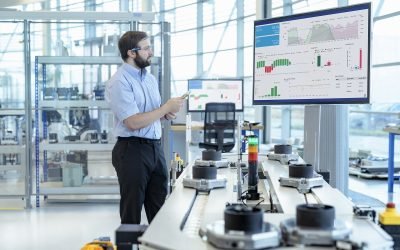Simulation is a fundamental process used in engineering to evaluate or predict the behavior of a system in a given situation. It can be done in several ways: in a past before computers, it was done through analytical solutions. With the emergence of computers, the simulation process had a gigantic evolution. This is because the CAD, CAE and CAM systems were created, generating a revolution in what we now call numerical simulation.
It is currently impossible to think about engineering without computerized or numerical simulation tools, or virtual engineering. The application of CAD and CAE technologies dramatically reduces time and cost for troubleshooting, component and product design, and improves quality.
That is, it is a virtual prototype. For example: imagine a virtual vehicle, in which by simulation we can evaluate stability, safety, noise, consumption, etc. before manufacturing a physical prototype. In Formula 1, the entire aerodynamic design is done by CFD numerical simulation, in order to emulate a wind tunnel.
This is the same technology used here at Vibroacoustica. We have professionals specialized in different types of analysis, with proven results for companies in different sectors. In this text, you will understand in detail how different types of computer simulation can facilitate the progress of your engineering project.

What is engineering simulation
Numerical simulation is part of computer-aided engineering processes. In other words, it is about using software to simulate performance and validate and optimize components. Its engineering benefits are nothing new: this 2001 article describes it as an effective problem-solving technique:
“The simulation consists of the emulation of a real situation, from a model, which in turn corresponds to a simplified representation of reality. Simulation is a process of experimenting with a detailed model of a real system to determine how the system will respond to changes in its structure, environment or boundary conditions. A well-built model helps to find the answers to important questions and, therefore, makes simulation a useful and powerful technique for problem solving.”
One of its main objectives is to solve problems still in the project development phase. Thus, even before the manufacture of the first prototypes, it is possible to understand how certain structures behave and correlate.
That is, problems caused by concept flaws can be solved with greater agility. Likewise, it is possible to suggest performance improvements for components. In summary, products developed with the support of computer simulation have reliability and durability.

The benefits of simulation for engineering
action of CAD tools, CAE CAM produces great advantages for large companies and also expands the technicians for the projects carried out. The issue can be summarized around the increase in productivity; reduction of lead time and delivery; and increase in product quality.
Among the benefits are:
- Greater reliability and durability
- Agility in structural validations
- performance improvement
- Elimination of trial and error physical testing
- Reduction in the number of prototypes
- Increase in competitiveness
- Decrease in release deadlines
The simulations cover a number of areas, such as CFD, FEA, MES, MDB analysis, among others!
On our portfolio page, you can see some details of the analyzes developed for partners in the automotive, oil and gas, and refrigeration industries. Analyzes for compressors, car noise tests and CFD simulations were developed, in which we were successful in anticipating and solving problems in the design phase.
Keep following our blog and social media for more updates on our projects!




